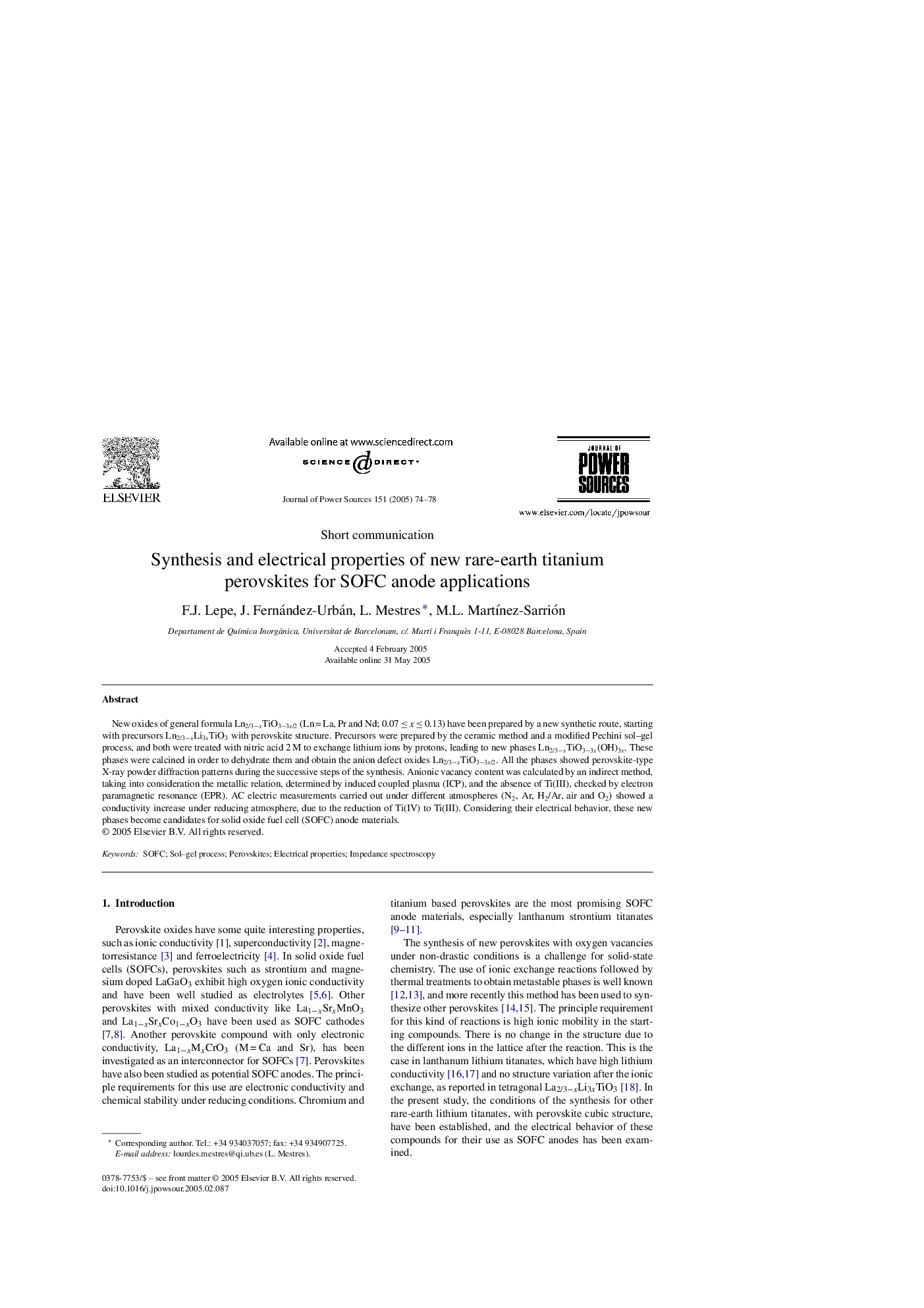| Article ID | Journal | Published Year | Pages | File Type |
|---|---|---|---|---|
| 9760155 | Journal of Power Sources | 2005 | 5 Pages |
Abstract
New oxides of general formula Ln2/3âxTiO3â3x/2 (Ln = La, Pr and Nd; 0.07 â¤Â x â¤Â 0.13) have been prepared by a new synthetic route, starting with precursors Ln2/3âxLi3xTiO3 with perovskite structure. Precursors were prepared by the ceramic method and a modified Pechini sol-gel process, and both were treated with nitric acid 2 M to exchange lithium ions by protons, leading to new phases Ln2/3âxTiO3â3x(OH)3x. These phases were calcined in order to dehydrate them and obtain the anion defect oxides Ln2/3âxTiO3â3x/2. All the phases showed perovskite-type X-ray powder diffraction patterns during the successive steps of the synthesis. Anionic vacancy content was calculated by an indirect method, taking into consideration the metallic relation, determined by induced coupled plasma (ICP), and the absence of Ti(III), checked by electron paramagnetic resonance (EPR). AC electric measurements carried out under different atmospheres (N2, Ar, H2/Ar, air and O2) showed a conductivity increase under reducing atmosphere, due to the reduction of Ti(IV) to Ti(III). Considering their electrical behavior, these new phases become candidates for solid oxide fuel cell (SOFC) anode materials.
Related Topics
Physical Sciences and Engineering
Chemistry
Electrochemistry
Authors
F.J. Lepe, J. Fernández-Urbán, L. Mestres, M.L. MartÃnez-Sarrión,
